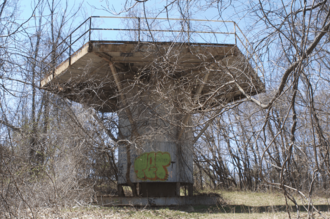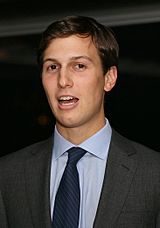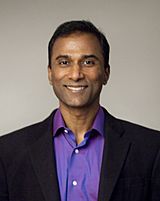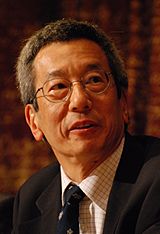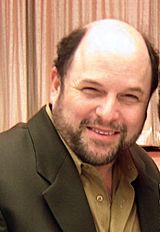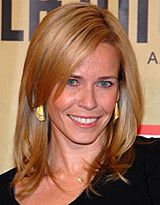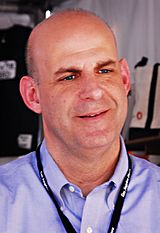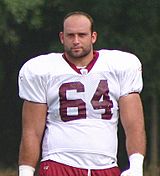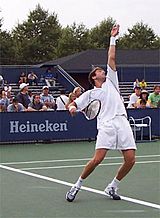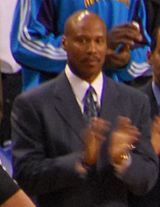Livingston, New Jersey facts for kids
Quick facts for kids
Livingston, New Jersey
|
||
|---|---|---|
|
Township
|
||
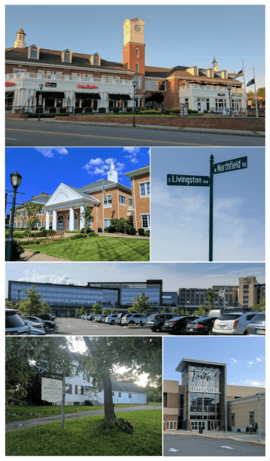
Montage: Livingston Town Center (top row), Town Hall (left row 2), street sign (right row 2), St. Barnabas Medical Center (row 3), Historic Force Homestead (left row 4) and Livingston Mall (right row 4)
|
||
|
||

Location of Livingston in Essex County highlighted in red (right). Inset map: Location of Essex County in New Jersey highlighted in orange (left).
|
||
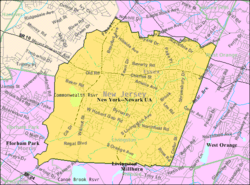
Census Bureau map of Livingston, New Jersey
|
||
| Country | ||
| State | ||
| County | Essex | |
| Incorporated | February 5, 1813 | |
| Named for | William Livingston | |
| Government | ||
| • Type | Faulkner Act (council–manager) | |
| • Body | Township Council | |
| Area | ||
| • Total | 14.12 sq mi (36.57 km2) | |
| • Land | 13.79 sq mi (35.70 km2) | |
| • Water | 0.33 sq mi (0.86 km2) 2.37% | |
| Area rank | 177th of 565 in state 2nd of 22 in county |
|
| Elevation | 289 ft (88 m) | |
| Population
(2020)
|
||
| • Total | 31,330 | |
| • Estimate
(2023)
|
31,089 | |
| • Rank | 75th of 565 in state 9th of 22 in county |
|
| • Density | 2,272.8/sq mi (877.5/km2) | |
| • Density rank | 275th of 565 in state 17th of 22 in county |
|
| Time zone | UTC−05:00 (EST) | |
| • Summer (DST) | UTC−04:00 (Eastern (EDT)) | |
| ZIP Code |
07039
|
|
| Area code(s) | 973 | |
| FIPS code | 3401340890 | |
| GNIS feature ID | 0882219 | |
Livingston is a township located in Essex County, New Jersey. It's a vibrant community in the New York metropolitan area. In 2020, about 31,330 people lived here, making it a growing place.
Livingston became an official township on February 5, 1813. It was formed from parts of Caldwell Township and Springfield Township. The township was named after William Livingston, who was the very first Governor of New Jersey. His family's coat of arms was even used as the town's official seal for many years.
Livingston is known for being one of New Jersey's wealthier communities. In recent years, the average household income here has been much higher than the state average.
Contents
- Livingston's Past: A Journey Through Time
- Where is Livingston? Geography and Location
- Who Lives in Livingston? Population and Diversity
- Shopping and Businesses in Livingston
- Arts and Culture: Creative Fun in Livingston
- Sports and Recreation: Stay Active in Livingston
- Education: Learning in Livingston
- Historic Sites: A Glimpse into the Past
- Getting Around: Transportation in Livingston
- Notable Events in Livingston
- Famous People from Livingston
- See also
Livingston's Past: A Journey Through Time
Livingston's story began in 1699. About 101 settlers from Newark wanted to move west. They worked with Lenni Lenape Native Americans to buy a large area called the Horseneck Tract. This area now includes Livingston and eight other towns.
The settlers bought the land directly from the Lenni Lenape in 1702. However, there were disagreements with the English owners of the land. These disputes led to a series of events known as the Horseneck Riots, which lasted from 1745 to 1755. William Livingston, who owned land in the area, supported the settlers during these times.
From Farmland to Modern Town
After the American Revolutionary War, more people settled in Livingston. The first school was built in 1783. In 1813, the township officially became a town. At first, lumber and farming were the main jobs. Later, shoemaking and dairy farming became important.
The town grew slowly because it was hard to get to. But after the 1920s, when cars became popular, Livingston's population grew quickly. Many new homes were built, especially after World War II. By 1970, over 30,000 people lived here.
During this growth, important services were created. These included a public library in 1916, a volunteer Fire Department in 1922, and a police chief in 1923. Even a major hospital, Cooperman Barnabas Medical Center, moved to Livingston in 1964. Today, Livingston is a busy suburban community with a highly-rated school system.
Where is Livingston? Geography and Location
Livingston covers about 14.12 square miles (36.57 km2). Most of this area is land, with a small amount of water. It is located in the southwestern part of Essex County.
Livingston shares borders with several other towns. To the north is Roseland. To the east is West Orange. To the south are Millburn and Short Hills. On its western side, Livingston borders Morris County towns like Florham Park and East Hanover. The Passaic River forms the western border.
Who Lives in Livingston? Population and Diversity
Livingston has seen its population grow steadily over the years. In 2010, there were 29,366 people, and by 2020, it grew to 31,330.
Livingston is known for its diverse community. A significant portion of the population is of Jewish heritage. The town also has a growing Asian population, making it a place where many different cultures live together.
Shopping and Businesses in Livingston
Livingston has many places to shop and eat. There are three main shopping areas. The town center along Livingston Avenue has a mix of small local shops and national chain stores.
The Livingston Mall is another popular spot. It has several large department stores and other shops. The third shopping area is along Route 10, which includes a farmer's market and restaurants.
Livingston also has several office parks. These parks are home to the headquarters of various companies. Cooperman Barnabas Medical Center, a large hospital, is also located here. The town even has its own local TV station, Livingston TV, run by Livingston High School students.
Arts and Culture: Creative Fun in Livingston
Livingston is a hub for performing arts.
- Livingston Symphony Orchestra is a community group that performs classical music.
- Livingston Community Players puts on plays and musicals with local actors. They have won awards for their shows.
- Children's Theatre of Livingston gives kids in grades 2-8 a chance to act and learn about theater.
- New Jersey Ballet is a famous ballet company based in Livingston. They perform all over the world and also have a school.
Local Artists and Art Spaces
Livingston has many talented local artists. The Livingston Arts Association supports these artists. They hold exhibitions and workshops. The Arts Council of Livingston has a gallery at Livingston Town Center.
Riker Hill Art Park is a special place with over 40 artists' studios. Here, you can find artists working with pottery, metal, glass, jewelry, paintings, and photography. Many studios offer art classes for both kids and adults.
Sports and Recreation: Stay Active in Livingston
Livingston has a strong sports history. From 1984 to 1989, the town hosted the Livingston Open, a professional tennis tournament. Famous tennis player Andre Agassi won this tournament in 1988.
Parks and Outdoor Fun
Livingston has over 470 acres (1.9 km2) of wooded parks with hiking trails. Another 1817 acres (7.35 km2) are kept as natural areas. This means about 25% of the town's land is natural, providing homes for many animals.
The town also has many smaller parks for sports and play. These include two swimming pools, ten little league baseball fields, four full baseball fields, eight soccer/lacrosse fields, and a football field. There are also basketball courts, tennis courts, playgrounds, a jogging track, a dog park, and a pond for fishing and ice skating. The town plans to connect these parks with paths for biking and hiking.
Riker Hill Complex: Art and Dinosaurs
The Riker Hill Complex is a large parkland of 204 acres (0.83 km2). It includes three main areas:
- Riker Hill Art Park: This is a former missile site that is now home to many art studios.
- Walter Kidde Dinosaur Park: This is a special National Natural Landmark where dinosaur footprints have been found! It's not open to the public to protect the site.
- Becker Park: This is an undeveloped natural area.
Recreation Programs for Everyone
Livingston's recreation department offers many programs. There are courses for pre-schoolers, games and crafts for children, and sports programs for youth and adults. They also have special activities for seniors, including exercise classes and transportation. Many independent sports groups like Livingston Little League and Livingston Soccer Club also operate in the town.
Education: Learning in Livingston
Livingston has excellent public schools. The Livingston Public Schools district serves students from pre-kindergarten through 12th grade. There are six elementary schools, two middle schools, and one high school.
- Burnet Hill Elementary School
- Collins Elementary School
- Amos W. Harrison Elementary School
- Hillside Elementary School
- Mount Pleasant Elementary School
- Riker Hill Elementary School
- Mount Pleasant Middle School (for 6th grade)
- Heritage Middle School (for 7th and 8th grades)
- Livingston High School (for grades 9-12)
Livingston High School is highly recognized. It received the National Blue Ribbon Schools Award in 1997–98, which is a very high honor. It is often ranked among the best high schools in New Jersey and the United States. Many adults in Livingston have advanced degrees, showing a strong focus on education. The Livingston Public Library is also highly rated.
Private Schools in Livingston
Livingston also has several private schools:
- Aquinas Academy: A Catholic school for preschool through eighth grade.
- Joseph Kushner Hebrew Academy: A Jewish day school for preschool through eighth grade.
- Rae Kushner Yeshiva High School: A Jewish high school for grades 9-12.
- Newark Academy: A private day school for grades 6-12, founded in 1774.
- There are also weekend Chinese-language schools.
Historic Sites: A Glimpse into the Past
Livingston has several historic places that tell its story.
- Ward–Force House and Condit Family Cook House: These two old buildings are located at 366 South Livingston Avenue. The Ward-Force House was built around 1745. It was owned by Thomas Force, a patriot during the Revolutionary War. The Condit Family Cook House was moved here when the Livingston Mall was built. Today, these buildings are home to the Livingston Historical Society and the Force Homestead Museum.
- Dickinson House: Located at 84 Dickinson Lane, this house was once visited by U.S. President Theodore Roosevelt for a hunting trip.
- Washington Place Schoolhouse: This old schoolhouse, built around 1800, is located at 122 Passaic Avenue.
Getting Around: Transportation in Livingston
Livingston is about 21.9 miles (35.2 km) from New York City. Several major roads pass through or near Livingston, including Interstate 280 and Route 10. These roads connect Livingston to other major highways like Interstate 80, the Garden State Parkway, and the New Jersey Turnpike.
Buses and Trains
You can take a bus from Livingston to the Port Authority Bus Terminal in New York City. NJ Transit also offers bus service to Newark.
For train service, residents can go to nearby towns like Short Hills, Millburn, or South Orange. These stations are about 5 to 7 miles (8.0 to 11.3 km) from Livingston. The township also has a special shuttle service called Livingston Express Shuttle. It takes people from Livingston Mall to the South Orange station for trains to Midtown Manhattan.
Notable Events in Livingston
Livingston has hosted several important events:
- In 1992, Bill Clinton, who later became President, visited Livingston High School during his campaign.
- The Olympic Torch passed through Livingston in 1996 on its way to the Atlanta Olympics.
- In 1999, Governor Christine Todd Whitman held a town hall meeting at Livingston High School.
- Governor Jon Corzine held a forum at Livingston High School in 2008.
- In 2015, Chris Christie launched his campaign for president at Livingston High School.
Famous People from Livingston
Many interesting and famous people have lived in or are connected to Livingston:
Academia and Science
- Shiva Ayyadurai (born 1963), a scientist who claims to have developed email.
- Denise J. Jamieson (born around 1965), a leading gynecologist.
- Paul E. Olsen (born 1953), a paleontologist who helped protect the Riker Hill Fossil Site.
- Roger Y. Tsien (1952–2016), a chemist who won the Nobel Prize in Chemistry in 2008.
Arts and Entertainment
- Jason Alexander (born 1959), actor, famous for playing George Costanza on Seinfeld.
- Bruce Beck (born 1956), a sportscaster for WNBC.
- Joe Dante (born 1946), a film director known for movies like Gremlins.
- Dana Gaier (born 1997), actress, known for voicing Edith in the Despicable Me movies.
- Chelsea Handler (born 1975), a comedian, author, and TV host.
- Nikki M. James (born 1981), a Tony-Award-winning actress and singer.
- Leslie Kritzer (born 1977), a Broadway actress.
- Adam Pally (born 1982), a comedian and actor.
- Todd Solondz (born 1959), a film director.
- Wendy Williams (born 1964), a radio and TV host.
- Danny Zuker (born 1963), an Emmy award-winning writer and producer for Modern Family.
Literature
- Harlan Coben (born 1962), a best-selling author.
- Susie Fishbein (born 1968), an author of popular kosher cookbooks.
- Wendy Mass (born 1967), an author of children's books.
Sports
- Jozy Altidore (born 1989), a professional soccer player for the USA team.
- Tashawn Bower (born 1995), an NFL defensive end.
- Hazel Clark (born 1977), an Olympic runner.
- Tom Courtney (1933–2023), an athlete who won two gold medals in the 1956 Summer Olympics.
- Tommy DeVito (born 1998), a quarterback for the New York Giants.
- Lennie Friedman (born 1976), a former NFL offensive lineman.
- Justin Gimelstob (born 1977), a professional tennis player.
- Chris Jacobs (born 1964), an Olympic swimming medalist.
- Dan Kellner (born 1976), an Olympic foil fencer.
- Brevin Knight (born 1975), a professional basketball player.
- Connor Lade (born 1989), a professional soccer player.
- Larry Ogunjobi (born 1994), an NFL defensive tackle.
- Deonna Purrazzo (born 1994), a professional wrestler.
- Claudio Reyna (born 1973), a professional soccer player who played in the World Cup.
- Byron Scott (born 1961), a former professional basketball player and coach.
- David Tyree (born 1980), an NFL wide receiver who played for the Super Bowl champion New York Giants.
See also
 In Spanish: Livingston (Nueva Jersey) para niños
In Spanish: Livingston (Nueva Jersey) para niños






